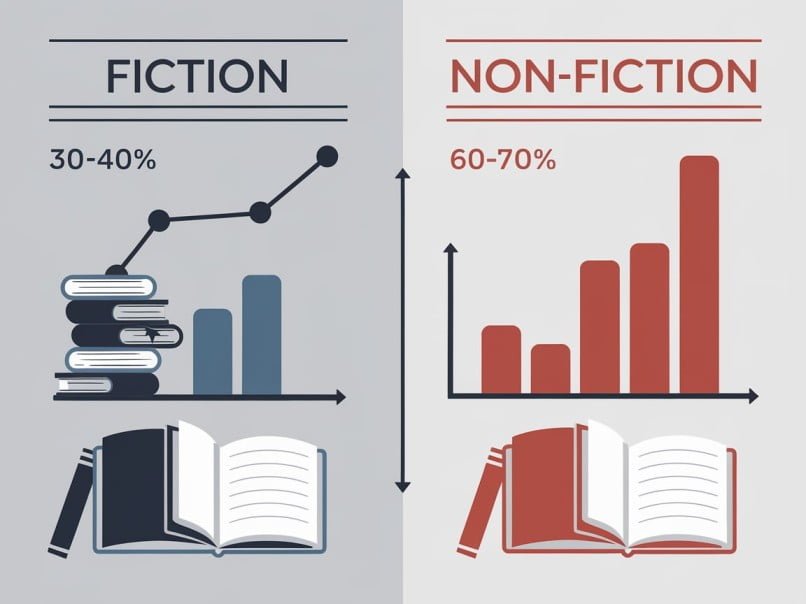In today’s digital age, where information is readily available at our fingertips, one might wonder if the traditional book publishing industry is still thriving. The answer might surprise you. Despite the rise of e-books, audiobooks, and online content, the number of books published yearly continues to grow astonishingly. This comprehensive blog post will explore the fascinating world of book publishing statistics, examining global trends, regional variations, and the factors driving this literary explosion.
The Global Picture: A Numbers Game
Worldwide Publishing Statistics
The global publishing industry is a behemoth, with millions of new titles hitting the shelves (both physical and virtual) each year. While exact figures can be challenging to pin down due to variations in reporting methods and the inclusion of self-published works, estimates suggest that anywhere between 2 to 4 million books are published annually worldwide.

Key Players in the Global Market
- United States: As one of the largest book markets globally, the US publishes over 300,000 new titles each year.
- China: With its vast population and growing literacy rates, China has become a publishing powerhouse, releasing over 500,000 new books annually.
- United Kingdom: Despite its smaller size, the UK punches above its weight, publishing around 200,000 new titles per year.
- Germany: Known for its rich literary tradition, Germany contributes approximately 80,000 new books to the global total annually.
- Japan: The Land of the Rising Sun adds about 70,000 new titles to the world’s bookshelves each year.
Breaking Down the Numbers: Categories and Genres
The millions of books published annually span a wide range of categories and genres. Understanding this distribution can provide valuable insights into reading trends and market demands.
Fiction vs. Non-Fiction
While the exact split varies by country and year, generally:
- Fiction accounts for about 30-40% of published titles
- Non-fiction makes up the remaining 60-70%

Popular Categories
- General Fiction: Including literary fiction, romance, mystery, and thrillers
- Children’s Books: A consistently strong category, reflecting the importance of early literacy
- Self-Help and Personal Development: Reflecting a growing interest in personal growth and well-being
- Business and Economics: Catering to professionals and entrepreneurs
- Science and Technology: Keeping pace with rapid advancements in these fields
- Biographies and Memoirs: Offering readers insights into the lives of notable figures
- Cookbooks and Food Writing: A perennial favorite among readers
The Self-Publishing Revolution
One of the most significant factors contributing to the increase in published books is the rise of self-publishing. With the advent of platforms like Amazon Kindle Direct Publishing, Lulu, and IngramSpark, authors now have unprecedented access to publishing tools and distribution channels.
Self-Publishing Statistics
- Estimates suggest that self-published titles account for 30-40% of all e-book sales in major markets.
- In the US alone, over 1 million books were self-published in 2020, a 264% increase since 2015.
- The number of ISBN registrations for self-published books has grown by 156% between 2012 and 2020.
Impact on Traditional Publishing
The self-publishing boom has had a profound impact on the traditional publishing industry:
- Increased Competition: Traditional publishers now compete with a vast array of independently published works.
- Changed Acquisition Strategies: Many publishers now scout successful self-published authors for traditional deals.
- Hybrid Publishing Models: Some authors choose to self-publish some works while maintaining traditional contracts for others.

Regional Variations: A Global Perspective
While global figures provide a broad overview, it’s essential to understand that publishing trends vary significantly by region and country.
North America
- United States: As mentioned earlier, the US publishes over 300,000 new titles annually.
- Canada: Approximately 20,000 new books are published each year in Canada.
Europe
- United Kingdom: With around 200,000 new titles per year, the UK is a major player in the global publishing scene.
- Germany: Known for its book fairs and literary culture, Germany publishes about 80,000 new titles annually.
- France: The French publishing industry releases approximately 70,000 new books each year.
- Spain: Spanish publishers contribute around 60,000 new titles to the global total annually.
Asia
- China: Leading the pack with over 500,000 new titles per year.
- Japan: Publishes approximately 70,000 new books annually.
- India: With its diverse linguistic landscape, India publishes about 90,000 new titles each year across various languages.
Latin America
- Brazil: The largest publishing market in Latin America, Brazil produces around 50,000 new titles annually.
- Mexico: Mexican publishers release approximately 30,000 new books each year.
Africa
- While specific numbers are harder to come by for many African countries, the continent’s publishing industry is growing rapidly.
- South Africa: As one of the continent’s largest book markets, South Africa publishes around 10,000 new titles annually.

Factors Driving the Publishing Boom
Several key factors contribute to the continued growth in book publishing:
- Technological Advancements: Digital publishing tools and print-on-demand technology have made it easier and more cost-effective to produce books.
- Increased Global Literacy: As literacy rates rise worldwide, so does the demand for books and written content.
- Niche Markets: The ability to target specific audiences has allowed for the proliferation of niche publications.
- Educational Demands: The ongoing need for textbooks and educational materials drives a significant portion of publishing output.
- Cultural and Linguistic Diversity: Books are increasingly being published in a wider variety of languages and dialects, catering to diverse global audiences.
- E-book and Audiobook Popularity: The rise of digital formats has expanded the market without necessarily cannibalizing print sales.
- Social Media and Online Marketing: Authors and publishers can now reach readers directly, increasing visibility for new titles.
Challenges in Counting Books
While the numbers presented are impressive, it’s important to note that counting books is not an exact science. Several challenges complicate the process:
- Varying Definitions: What constitutes a “book” can differ between countries and organizations.
- Self-Publishing: Many self-published works may not be included in official statistics.
- Reprints and New Editions: Some counts may include reprints or new editions of existing works.
- Digital-Only Publications: E-books without ISBN numbers may not be counted in some statistics.
- Language Barriers: Books published in less dominant languages may be underreported in global statistics.
The Future of Publishing: Trends to Watch
As we look to the future, several trends are likely to shape the publishing landscape:
- Continued Growth of Self-Publishing: The democratization of publishing is likely to continue, with more authors choosing independent routes.
- Increased Digitalization: While print books remain popular, the share of e-books and audiobooks is expected to grow.
- Artificial Intelligence in Publishing: AI tools may play a larger role in content creation, editing, and market analysis.
- Sustainability Focus: Eco-friendly publishing practices and materials are likely to become more prevalent.
- Globalization of Content: Cross-border publishing and translation rights are expected to increase, making books more accessible globally.
- Interactive and Multimedia Books: The line between traditional books and other media forms may continue to blur.
Conclusion: A World of Words
The sheer number of books published each year is a testament to humanity’s enduring love affair with the written word. Despite predictions of the book’s demise in the face of digital media, the publishing industry continues to thrive and evolve. With millions of new titles released annually, there’s truly something for every reader, whether they prefer the latest bestseller, a niche academic text, or a self-published gem.
As we move forward, the publishing landscape will undoubtedly continue to change, driven by technological innovations, shifting reader preferences, and global cultural exchanges. One thing remains certain: the world’s appetite for books shows no signs of waning. Whether you’re a voracious reader, an aspiring author, or simply curious about the state of global publishing, these statistics offer a fascinating glimpse into the vibrant, ever-expanding universe of books.
So, the next time you pick up a book, remember that you’re holding one small piece of an enormous, ever-growing literary puzzle – one that adds millions of new pieces each and every year.





